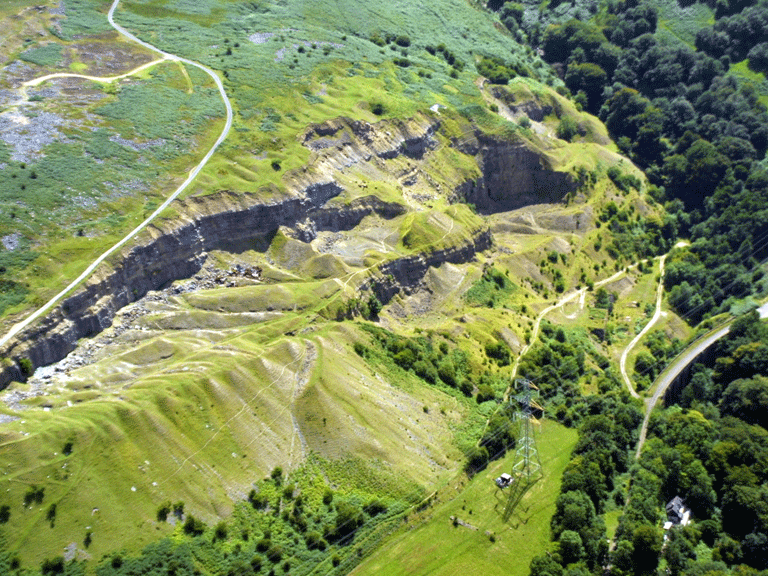Clydach Gorge
007 Clydach Limeworks and Gilwern Quarry

HLCA 007 Clydach Limeworks and Gilwern Quarry
Late 19th century quarries and limeworks and associated features; industrial transport.Back to Map
Historic Background
The historic landscape area of Clydach Limeworks and Gilwern Quarry comprises an area given over to the extraction and processing of limestone. The limekiln and quarries at the site of the Clydach Limeworks are considered to have been originally established to provide lime for the construction of the adjacent railway viaduct and tunnel of the MT & A. The main bank of limekilns (Listed Grade II) was built when the railway line was doubled by 1877. Production at the quarry rose steadily between 1890s and the 1940s, though after 1947 the limits of the quarry had been reached and minor extensions to the quarry face occurred thereafter.
The quarry was worked by the Clydach and Abergavenny Lime and Stone Co. Ltd, the company being active in the valley as early as 1871 and was taken over in 1930 and traded as the Clydach - Abergavenny Quarries as a subsidiary of the Laird Quarries at Malvern.
The other quarries in the area are those of Gilwern Hill. These began operation in 1885, when they were leased to the Blaenavon Co. Ltd; in 1911 the lease passed to the Premier Investment Co. Ltd, and then in 1942 reverted to the Blaenavon Co. Ltd again, though the war ceased operations.
Gilwern Hill retains fine examples of limekilns (including later pair displaying double draw-arches for each shaft, and an earlier pair within Cwm Nant Dyar with single arches) served by a branch from the MT & A Railway. The stone was won by explosives, and transportation within the works was by horses stabled in the red brick building near the later kilns and the building attached to the older sets of kilns. Other associated surviving features include foundations of the Manager's House, and remains of an incline and associated brake wheelpit.
The later phases of the quarry are 'Cwm Quarry', operated during the 1920s served by its own incline. The lower part of the quarry comprises Dolomite limestone (Back Beds' or 'Iron beds'); this was first worked in the early 1930s for road stone and for fluxing in the Ebbw Vale furnaces. During this period alterations were made to the main east-west incline. Other features belonging to these workings include concrete aggregate bins.
Historic Landscape Characteristics
Clydach Limeworks and Gilwern Quarry is characterised as an area of late 19th century quarries and limestone workings, with dramatic working faces and important surviving associated structures. The works are associated with the construction of the adjacent MT & A Railway to which it was formerly linked by a siding with an incline, completed in 1864.